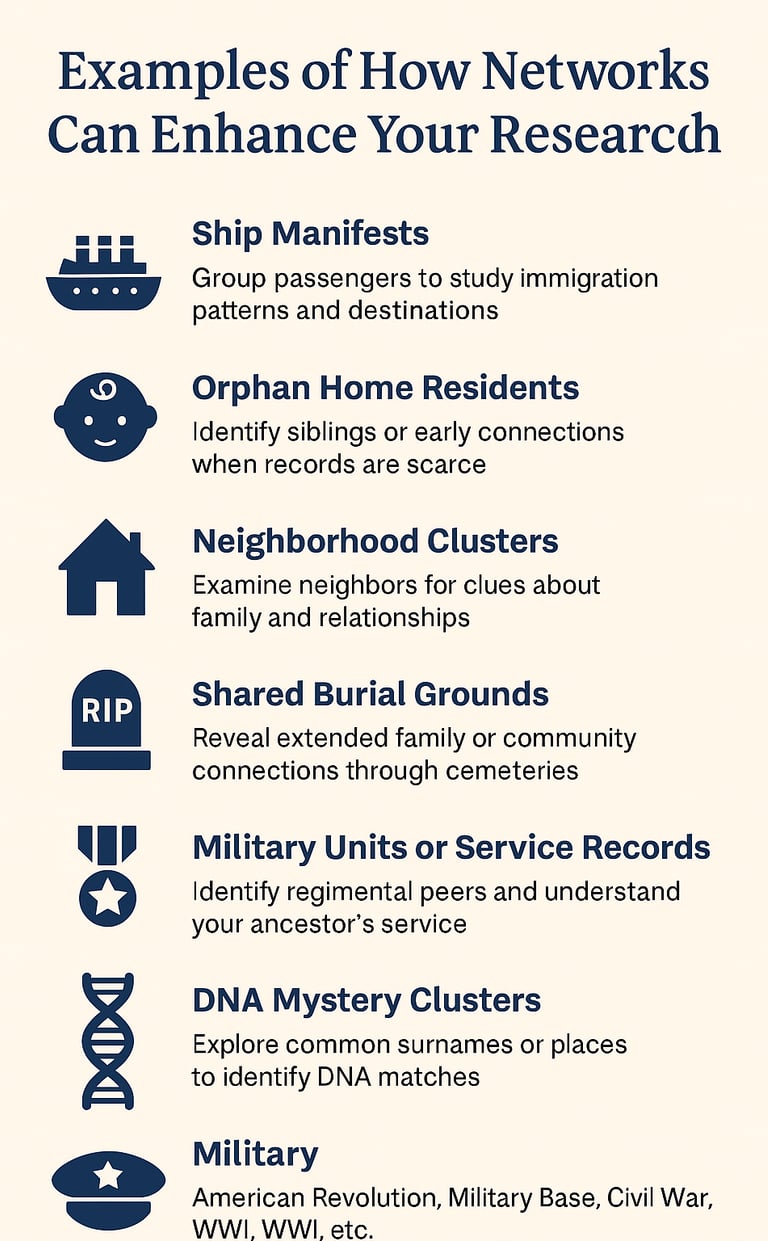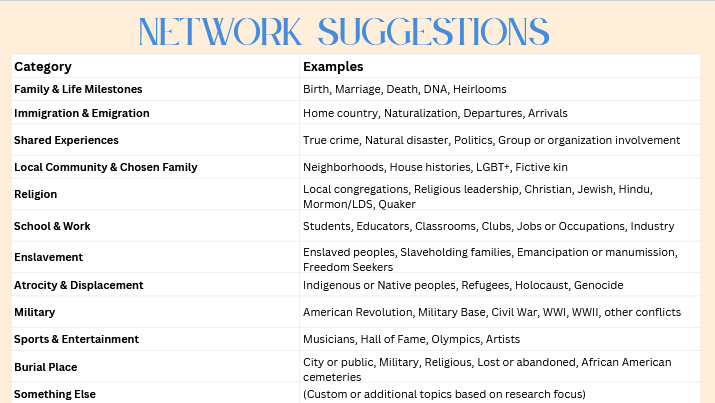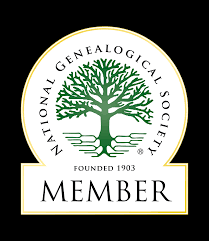How to Use Ancestry Pro Tools Networks to Break Through Brick Walls in Your Research
Discover how Ancestry's Networks feature can take your genealogy research beyond the family tree. Networks lets you group people by shared experiences, locations, or events, helping you uncover hidden connections, organize complex cases, and solve difficult research problems. Whether you are investigating ship passengers, orphan home residents, or DNA match clusters, this tool provides a flexible and private workspace to explore your theories. In this post, you will learn what Networks is, how to use it step by step, and how it can improve your family history research.
- Aimee Rose-Haynes
6/13/20253 min read


Unlocking the Power of Ancestry Pro Tools: Networks
If you've ever stared at a confusing census entry or reached a dead end in your family tree, you know that focusing on your ancestor alone may not be enough. The reality is, our ancestors lived in communities, and understanding those communities can lead to answers. That’s where Networks, a feature included with Ancestry Pro Tools, becomes a valuable tool.
Networks allows you to explore the people who surrounded your ancestors, including neighbors, shipmates, fellow soldiers, or others who shared meaningful experiences. It gives you a private workspace to organize and analyze these groups, helping you uncover hidden connections and solve challenging research problems.
Let’s explore what Networks is, how it works, and how you can use it step by step in your research.
What Is the Networks Feature?
Networks is a tool in Ancestry Pro Tools that allows you to create groups of people connected to your ancestor by location, time period, or life event. These individuals may not be directly related, but they played a role in your ancestor’s world.
You can use Networks to:
Group people who lived in the same neighborhood, served in the same military unit, or attended the same school
Track DNA matches who may connect to a shared ancestor
Organize research around shared experiences such as migration, war, or orphanage residence
Test theories and manage complex family clusters in a private, customizable setting
Why Use Networks?
Look beyond your direct line to reveal broader community connections
Organize research around a place, surname, or mystery person
Identify new sources by studying associates, neighbors, or witnesses
Make progress on brick walls by studying who your ancestor interacted with
Use a private space to test ideas and track research leads
Step-by-Step: How to Use Networks in Ancestry Pro Tools
Step 1: Activate Pro Tools
To use Networks, you will need:
A current Ancestry Pro Tools subscription ($10 per month in addition to your Ancestry membership)
A family tree you created or manage
A linked DNA test, if you want to use it for match clustering
Step 2: Open the Networks Tool
From your Ancestry homepage:
Go to the right-hand side under Pro Tools Shortcuts
Click Networks
Or, click More Pro Tools and then Create/View Network
Step 3: Create a New Network
Select Create New Network
Give your network a name, such as “New York Immigrants 1900s” or “John Doe’s Associates”
Choose a focus person if you’d like to anchor the research to someone specific
This network becomes a space where you can add people, upload sources, take notes, and analyze connections.
Step 4: Add People to Your Network
There are two ways to add people:
From within the tree: Go to a person’s profile, scroll down to the Relationships section, and select Add to Network
From the Network: Click Add Person, search your tree, and include anyone who may help with your research goal
These people do not need to be related to each other. You can include neighbors, community members, or DNA matches.
Step 5: Use Themes, Tags, and Notes
Ancestry gives you themes to help organize your network, such as:
Immigration and naturalization
Enslavement and emancipation
Local neighborhoods and community life
Religious affiliation
School, occupation, or military service
You can tag people with categories, write notes about your theories, and even use digital sticky notes to track tasks and research questions. See full list below in the table.
Step 6: Add Sources, Media, and Documentation
Click on any person in your network to:
Upload photos or documents
Add sources or citations
Record notes or observations
Keep everything tied to that individual in one central location
Step 7: Review and Update as Research Progresses
As your research evolves:
Add or remove people as needed
Update details or reassign tags
Use filters to narrow your view by date, location, or category
Revisit the network often to test new ideas and document progress
Networks are flexible and designed to grow with your research.
Real-Life Examples of How Networks Can Help
Here are a few research scenarios where Networks can be especially helpful:
Ship Manifests: Group fellow passengers from an immigration record and study their movements, sponsors, and connections
Orphan Homes: Create a network of children from the same institution to uncover possible siblings or later placements
Neighborhood Studies: Track neighbors from census records to identify extended family or social groups
Military Units: Build a network of fellow soldiers to locate pension applications, witness testimonies, or unit rosters
DNA Match Clusters: Add DNA matches who share similar surnames or geographic regions to identify potential common ancestors
Burial Records: Group individuals buried in the same cemetery to uncover familial or community connections
Final Thoughts
The Networks feature in Ancestry Pro Tools offers an innovative way to research family history by studying the people who surrounded your ancestors. It helps you ask better questions, follow new leads, and see the bigger picture. Whether you are solving an adoption mystery, researching a surname, or simply looking to break through a research barrier, Networks gives you the flexibility and focus to move forward.
Try building a network around your toughest ancestor. You may be surprised by what you find when you start looking beyond the tree. To learn more, here is the Ancestry page about Networks:
https://support.ancestry.com/s/article/Networks?language=en_US






